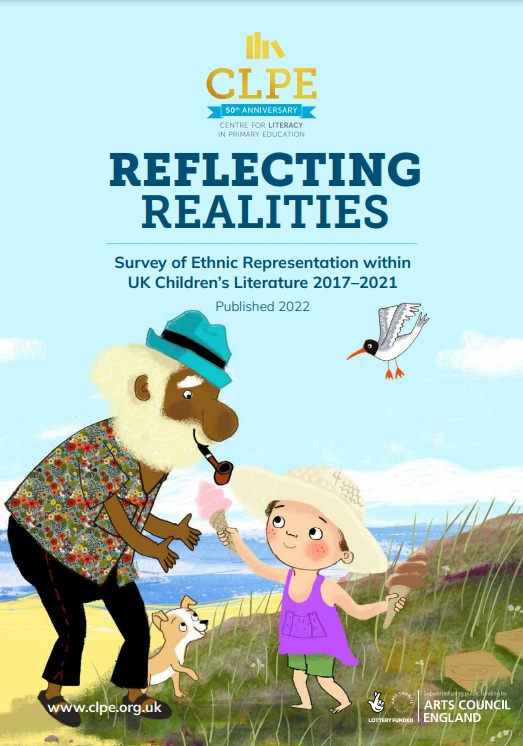Increasing diversity in children's books - with room for improvement
Posted on Friday, November 11, 2022
Category: News

CLPE's Reflecting Realities survey shows that there has been a sustained increase in the number and percentage of books that contain characters from racially minoritised backgrounds, between 2017 and 2022.
The survey explores the extent and quality of ethnic minority characters featured within Picturebooks, Fiction and Non-Fiction for ages 3–11, published in the UK. Representation in the books they read is vital in ensuring all young readers have the opportunity to encounter books in which they can see themselves, their experience and the wider world reflected.
The Reflecting Realities survey shows a positive shift in the number of children's books published featuring a minority ethnic character, up from 4% in 2017 to 20% in 2021. The percentage of books published with a main character from a racially minoritised background has risen but remains low at 9% in 2021. The survey also found that representation in Fiction remains low, lagging significantly behind increases in Picturebooks and Non-Fiction.
The survey considered 5,383 children's picture books, fiction and non-fiction titles published in the UK in 2021. Of these, 1,059 featured characters of colour. Some 20% of the children's picture books, fiction and non-fiction titles published in 2021, therefore, featured characters of colour, compared to 15% in 2020, 10% in 2019, 7% in 2018 and just 4% in 2017.
There has also been growth in the presence of racially minoritised characters as part of the main cast. 9% of the children's books published in the UK in 2021 had a main character from an ethnic minority background, compared to 8% in 2020, 5% in 2019, 4% in 2018 and 1% in 2017.
Children's books still, though, have some way to go to reflect the demographic makeup of English and Welsh populations, with Asian, Chinese, Mixed Race and Arabic representation still low compared to the actual demographics of these populations.
Moreover, the rate of growth in the presence of racially minoritised groups in fiction compared with those in picture books and non-fiction has been markedly slower, with the gap significantly widening over time; 61% of picture books published in 2021 included at least one racially minoritised character compared with 11% of fiction titles published in 2021 that featured characters from racially minoritised backgrounds.
CLPE chief executive Louise Johns Shepherd acknowledged, however, that the publishing industry has come a long way: "In 2017 very few books published included racially minorisited characters. In 2021, we have observed a shift towards the inclusion of more representative casts of characters in books published." This, she said, "will go some way toward diversifying book corners and the books on offer in the children’s section of libraries and shops, making them more reflective of the world in which our reading children are living".
A separate report undertaken by BookTrust, Representation of people of colour among children’s book creators in the UK by Dr Melanie Ramdarshan Bold, exploring the percentage of new books published in UK children's literature by creators of colour since 2007, will also be published this month, November.
